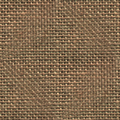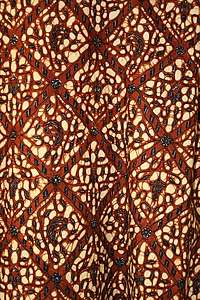Poplin
Poplin, also called tabinet (or tabbinet), is a fine, but thick, wool, cotton or silk fabric that has a horizontal warp and a vertical weft. Nowadays, it is a strong fabric in a plain weave of any fiber or blend, with crosswise ribs that typically gives a corded surface.[1]

Poplin traditionally consisted of a silk warp with a weft of worsted yarn. In this case, as the weft is in the form of a stout cord the fabric has a ridged structure, like rep, which gave depth and softness to the lustre of the silky surface. The ribs run across the fabric from selvedge to selvedge.
Poplin is now made with wool, cotton, silk, rayon, polyester or a mixture of these. Being a plain under/over weave, if the weft and warp threads are of the same material and size, the effect is a plain woven surface with no ribbing. Shirts made from this material are easy to iron and do not wrinkle easily.
Poplins are used for dress purposes, and for rich upholstery work which are formed by using coarse filling yarns in a plain/HARD weave.
The term poplin originates from papelino, a fabric made at Avignon, France, in the 15th century, named for the papal (pope's) residence there, and from the French papelaine (a fabric, normally made with silk, of the same period).[1] The most common usage of poplin until about the 20th century was to make silk, cotton or heavy weight wool dresses, suitable for winter wear. Poplin was also a popular upholstery fabric.
In the early 1920s, British-made cotton poplin was introduced to the United States, but the American market thought that the name had connotations of heaviness and arbitrarily renamed it broadcloth, a name that persists for a cotton or polyester-cotton blend fabric used for shirting.[2] In Europe, broadcloth typically describes a densely woven woolen fabric with a smooth finish.[2]
See also
References
- "poplin". The Thames & Hudson Dictionary of Fashion and Fashion Designers (via Credo Reference). Thames & Hudson. 2007. Retrieved 5 June 2011.
- Tortora, Phyllis G.; Johnson, Ingrid. The Fairchild Books Dictionary of Textiles. A&C Black. ISBN 9781609015350.


.svg.png)